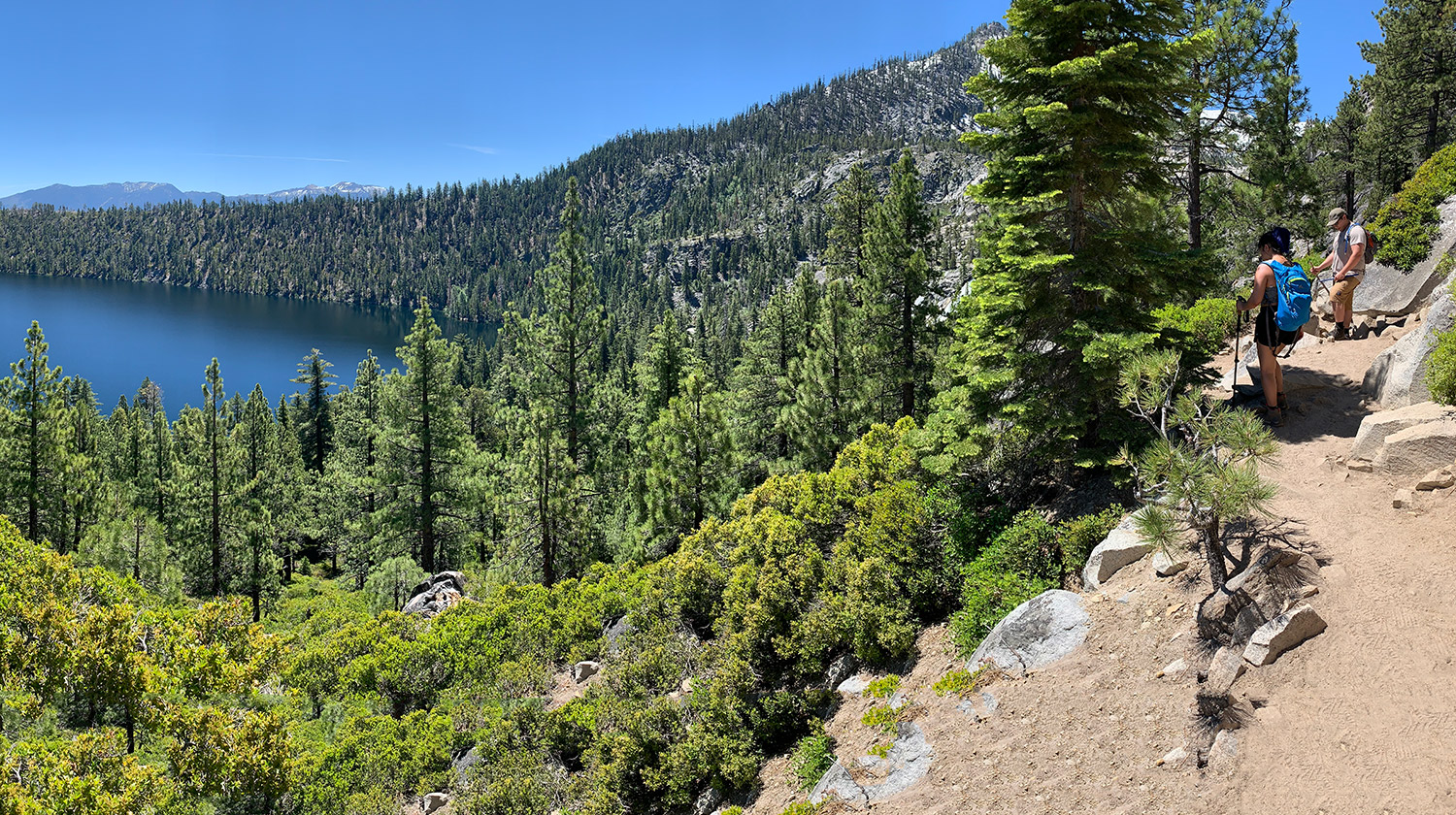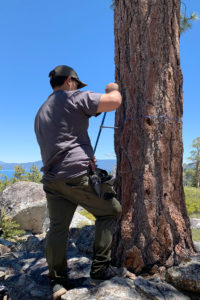
Education is all about empowering students, according to Parveen Chhetri, assistant professor in the Department of Earth Science and Geography at California State University, Dominguez Hills (CSUDH). For the trio of student assistants working in CSUDH’s Tree-Ring Lab — David “Skip” Saldana, Michelle Mohr, and Gabriel Angulo — that means getting invaluable hands-on experience in the skills of dendrochronology, the dating and study of annual growth rings in trees.
The Tree-Ring Lab is currently working on a project analyzing the history of drought events in California. By examining the thickness of trees’ yearly growth rings, they can deduce the amount of rainfall an area received in a particular year. The ultimate goal, said Chhetri, is “to see which climactic variables, like precipitation or temperature, control tree growth in California.”

In keeping with Chhetri’s focus on student empowerment, when the project called for the team to trek up to the south Lake Tahoe area to collect core samples, he prepared and equipped his students, then sent them on their way. He didn’t accompany them on the June 2019 field trip, in order to help them build confidence in their own abilities.
“I want them to be leaders in the field,” said Chhetri. “If I went with them, they would just follow my orders. If they go by themselves, they will learn how to tackle all the small obstacles they might face.”
Such student-led efforts are rare in the realm of university science education, and are helping CSUDH students get a leg up on others in the field. “At larger universities, undergraduates hardly ever get a chance to work with equipment and projects like this. They may get a chance to see the lab through the door, but they can’t actually use the equipment!” said Chhetri.
Not only do the students in the Tree-Ring Lab get to use the equipment, but they have been responsible for all aspects of the project – including applying for permits from the National Forestry Service. Since all of the students plan on moving on to graduate school, Chhetri felt that it was important for them to get their feet wet in the world of bureaucracy, as well. “Twenty percent of being a scientist is administrative, so they have to learn those skills, too,” he laughs.
As part of their application, the students had to pledge not to disturb the natural environment. “We only had permission for one or two cores per tree, and we couldn’t leave behind anything that wasn’t biodegradable,” said David “Skip” Saldana. “Basically, we could leave no trace that we were there.”

Before heading off to Tahoe, the students learned the skills needed for their study. “We started learning more about dendrochronology back in February,” said Michelle Mohr. They went out and practiced using a tree ring borer on trees around campus, until they were adept at getting good core samples – an essential skill when doing this kind of research.
“We had the safety of doing it here on campus first, and then were able to go out in the field and do it for real,” said Mohr.
At Tahoe, the students spent a week camping and gathering core samples from three dozen trees. The oldest trees in the area date to about 1650. “It’s good to have that many years of data,” said Mohr. “Now we can construct a 369-year climate history of the area.”
The students are currently engaged in compiling and analyzing the data that they accumulated on their trip. They plan to present the results of their work at the annual meeting of the American Geophysical Union, and at the Association of Pacific Coast Geographers. These presentations will give the students another chance to grow into their roles as scientists and researchers.
The Tahoe Basin project is also serving as a training ground for the students’ next big adventure: a trip to Nepal, where Chhetri was born. In 2020, the professor and students will travel to the Himalayas to conduct a similar study near Mount Makalu, the world’s fifth-highest mountain peak – about 20 miles southeast of Mount Everest.
The students will spend almost one month in Nepal, collecting tree ring cores and gathering data on the effect of climate change on forests in the area. Chhetri used the trek as motivation for the students’ Tahoe trip. “I told them, if I am impressed with your work, I will take you to Nepal. It’s the kind of hands-on opportunity you don’t get at a bigger school.”
Follow the progress of the CSUDH Tree-Ring Lab on Twitter: https://twitter.com/CsudhL